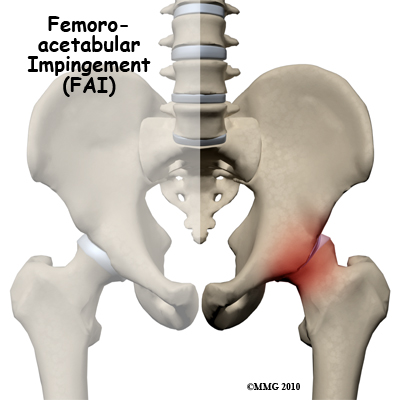
Femoroacetabular Impingement of the Hip
Femoroacetabular impingement (FAI) occurs in the hip joint. Impingement refers to some portion of the soft tissue around the hip socket getting pinched or compressed. Femoroacetabular tells us the impingement is occurring where the femur (thigh bone) meets the acetabulum (hip socket). There are two different types of impingement. They differ slightly depending on what gets pinched and where the impingement occurs.

Avascular Necrosis of the Hip
Bones are living tissue, and like all living tissues they rely on blood vessels to bring blood to keep them alive. Most living tissues have blood vessels that come from many directions into the tissue. If one blood vessel is damaged it may not cause problems, since there may be a backup blood supply coming in from a different direction. Certain joints of the body, however, have only a few blood vessels that bring in blood. One of these joints is the hip. This document will describe what happens ...
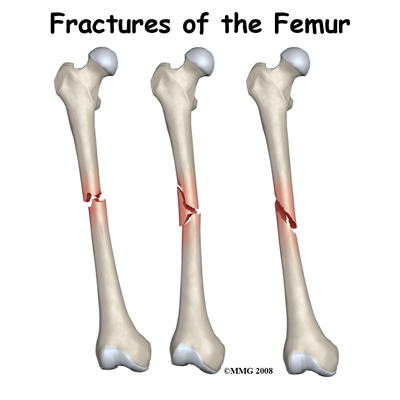
Adult Femur Fractures
The thigh bone, or femur is the longest and strongest bone of the body. It takes a lot of force to break the femur in an adult so it is often accompanied by other injuries. The fracture is a disabling problem, severely limiting mobility until it is stabilized.Until recently the most common way to treat a fractured femur was to apply traction, the source of a thousand cartoons and jokes. Fortunately, modern treatment usually stabilizes the bone quite early on and allows you to move around on crut...
Evidence-Based Approach to Hip Fractures
A group of orthopedic surgeons from four well-known orthopedic clinics took the time to review available studies on hip fractures. In this report, they summarize the evidence around treating femoral hip fractures. The information was gathered from the Cochrane database and the Scottish Intercollegiate Guidelines Network (SIGN) database. Both of these organizations are well respected for their critical reviews of the literature.
The High Cost of Hip Dislocation After Joint Replacement
There are high costs associated with a hip dislocation after a total hip replacement (THR). And they are not all financial. The psychologic distress of a hip dislocation and fear of recurring dislocations can be very traumatic.
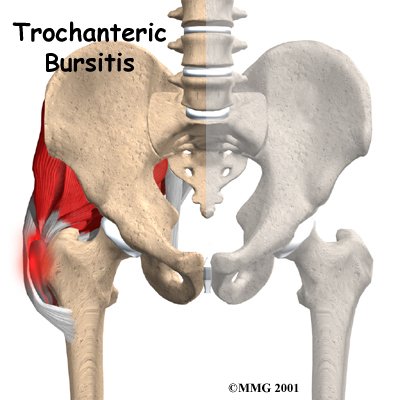
Trochanteric Bursitis of the Hip
A common spot for bursitis is on the side of the hip. Here a large tendon passes over the bony bump on the side of the hip. The bony bump is called the greater trochanter. Inflammation in the bursa between the tendon and the greater trochanter is called trochanteric bursitis. This problem is common in older individuals. It may also occur in younger patients who are extremely active in exercises such as walking, running, or biking.
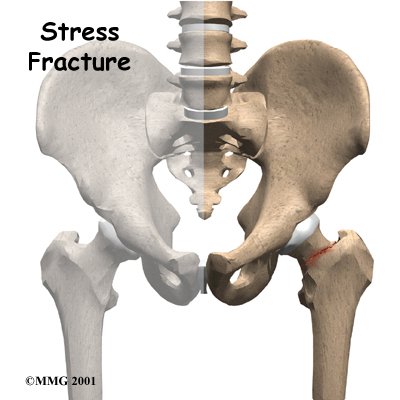
Stress Fracture of the Hip
Stress fractures of the hip once most commonly affected military personnel who marched and ran day after day. Today, stress fractures of the hip are more common in athletes, especially distance runners.
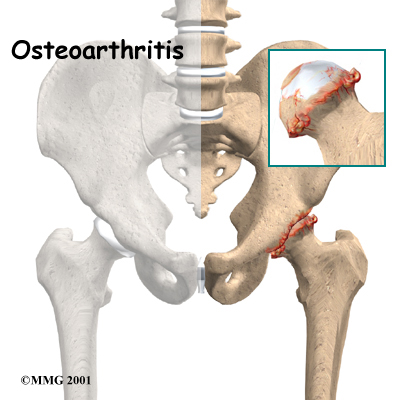
Osteoarthritis of the Hip
Osteoarthritis (OA) is a common problem for many people after middle age. OA is sometimes referred to as degenerative, or wear-and-tear, arthritis. OA commonly affects the hip joint. In the past, little was done for the condition. Now doctors have many ways to treat hip OA so patients have less pain, better movement, and improved quality of life.
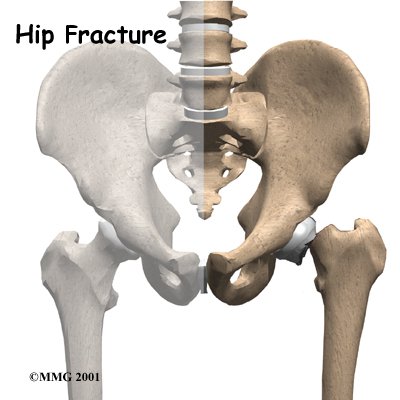
Hip Fractures
As the population ages, the number of hip fractures that occur each year rises. A fracture of the hip in an aging adult is not simply a broken bone. It is a life-threatening illness. The hip fracture itself is rarely a difficult problem to solve. But once the fracture occurs, it brings with it all the potential medical complications that can arise when aging patients are confined to bed. The complications are what can turn a simple break into a life-threatening illness.
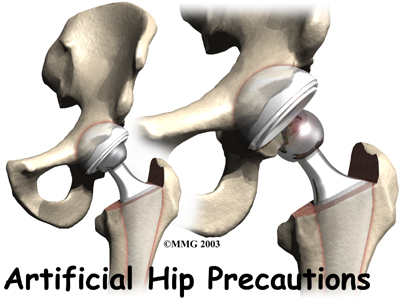
Artificial Hip Dislocation Precautions
Hip surgeries such as total joint replacement and hemiarthroplasty require the surgeon to open the hip joint capsule. This puts the hip at risk of dislocating after surgery. Patients follow special precautions after surgery about which hip positions and movements need to be avoided to keep the hip from dislocating. While you are in the hospital, your health care team will remind you often about the need to follow these hip precautions. Once you get home, you will have to remember to follow these...

